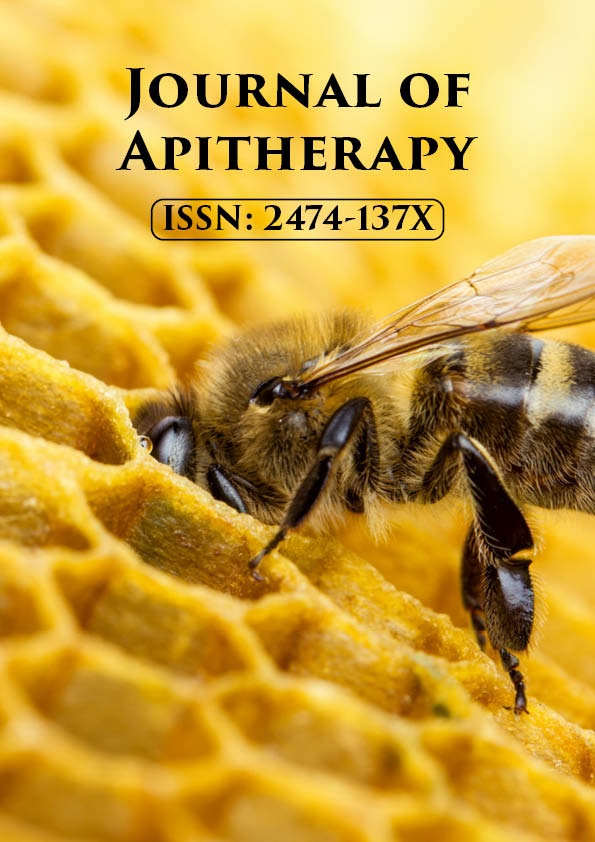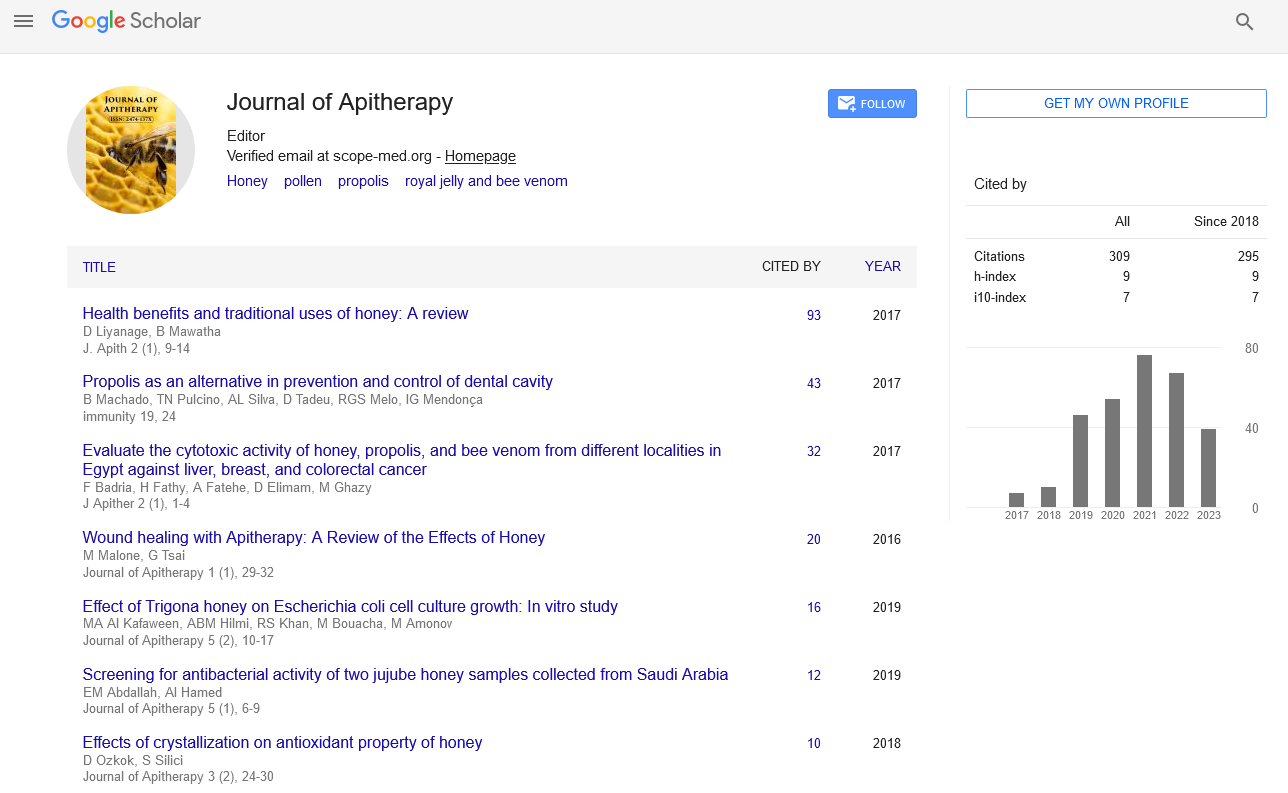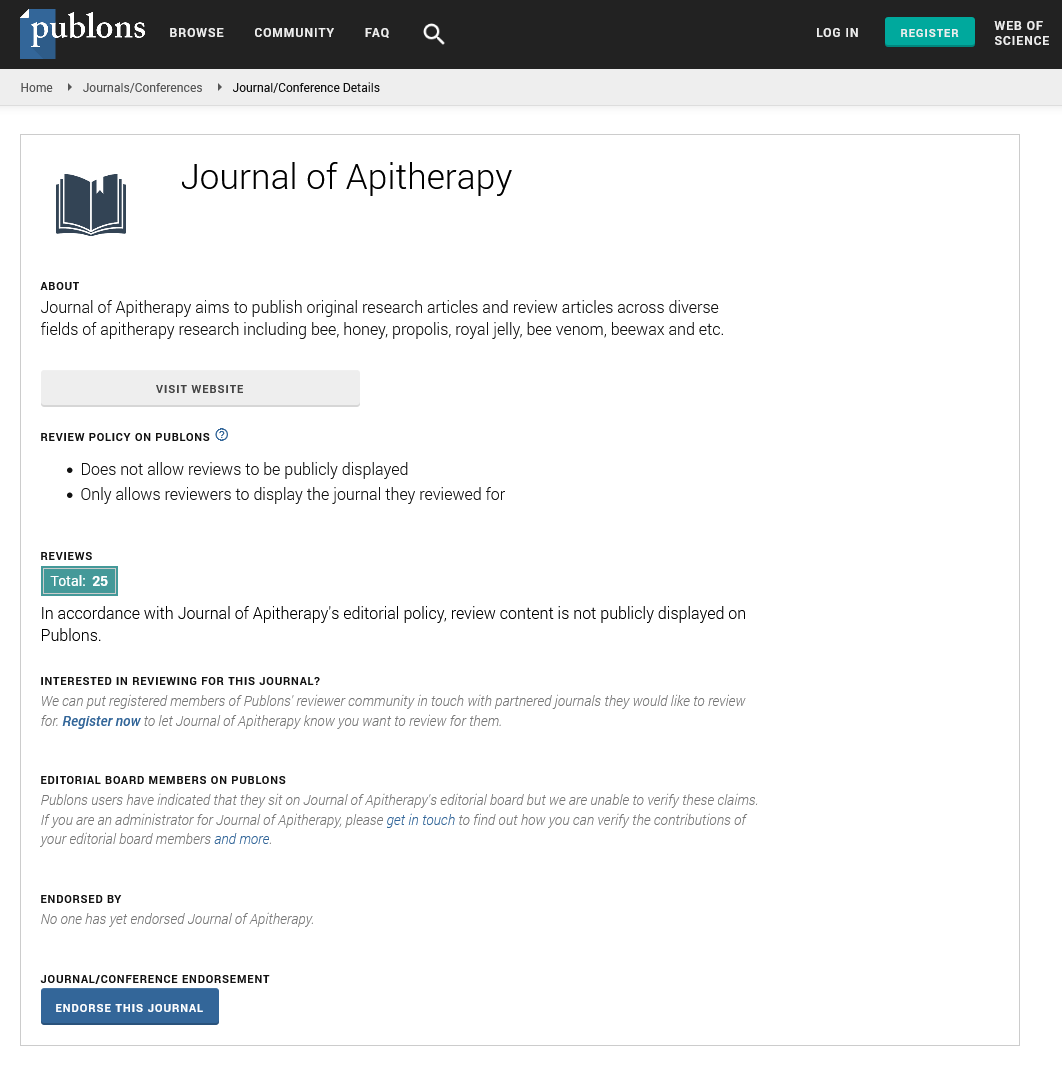Short Commentary - Journal of Apitherapy (2021)
Apitherapy Honeys for Medical Applications
Emdad Khan*Emdad Khan, Department of Biomedical Imaging and bioengineering, Canada, Email: Emdadkhan@yahooo.com
Published: 30-Jun-2021
Honey may be a common natural sweetener that's found worldwide. it's obtained from honeybees, which process the nectar of flowers or the secretions of living parts of plants. The floral source employed by bees is that the main variable that determines the composition of the honey they produce, and thus the chemical composition of honey is additionally often associated with the geographic area of production. Other factors which will affect honey during processing by humans include the addition of enzymes and therefore the reduction of water content. It’s also important that honey is stored in clean, dry conditions at an appropriate temperature and humidity level. Bee honey is one among the few virtually totally nonallergenic foods that the physical body can easily assimilate. It contains many nutrients and may be a good energy provider , since it's rich in carbohydrates (80–85%), and honey sugars are as easily digestible as those found in many fruits. found quite twenty sugars present in honey, with fructose and glucose being the main ones . Furthermore, the sum of the fructose and glucose content, the fructose: glucose ratio, and therefore the glucose: water ratio are other important factors associated with honey quality. The fructose: glucose ratio indicates the power of honey to crystallize. Honey contains quite 200 substances, including amino acids, enzymes, proteins, vitamins, minerals, ash, organic acids, and phenol compounds. The moisture content of bee honey is of major importance for its resistance to fermentation and granulation, since low moisture content protects honey from microbiological activity. the mixture of organic acids, water, and sugars can cause the formation of furanic aldehydes, the foremost important of which in food products is 5-hydroxymethyl-2-furfuraldehyde (HMF). Furanic aldehydes are usually formed via one among two pathways: the Maillard reaction or the dehydration of hexoses catalyzed by acid. The concentration of HMF in food is said to its quality and freshness, being virtually absent in fresh and untreated food, with increasing concentrations occurring as a results of thermal treatment and longer storage times. Other parameters linked to honey freshness or quality include its colour and its diastase index . Therefore, understanding the chemical and physical characteristics of honey is important so as to guage the standard of the sweetener or to detect the presence of adulterants. it's important to know the physicochemical properties of honey if its quality is to be determined, which is what the work reported here sets bent do.
Honey is potentially useful source of dietary antioxidants which may be used as medicinal purposes. Honey may be a product which is result from nectar of flowers. the bulk of honey is sugar which is bonded with antioxidant components. The physicochemical parameters of eight Iranian honey samples from different botanical origins were characterized during this study. Differences in their pH, moisture, sugar, and phenolic profiles were observed. Different Iranian honeys contain different carbohydrate compositions. the connection between different parameters, like phenolic concentration, color, antioxidant properties, moisture content, and Hydroxymethylfurfural (HMF) content were established. High correlations between total phenolic content and radical scavenging properties, moisture content and antioxidant properties were observed for all of the samples. The correlation between HMF content and honey color was also observed within the eight sorts of honey. A high direct correlation was found between the 2 assays wont to measure the antioxidant activity of honey and its total phenolic content, indicating the main contribution of phenolic to the antioxidant activity of honey, although there could also be other minor factors involved.







